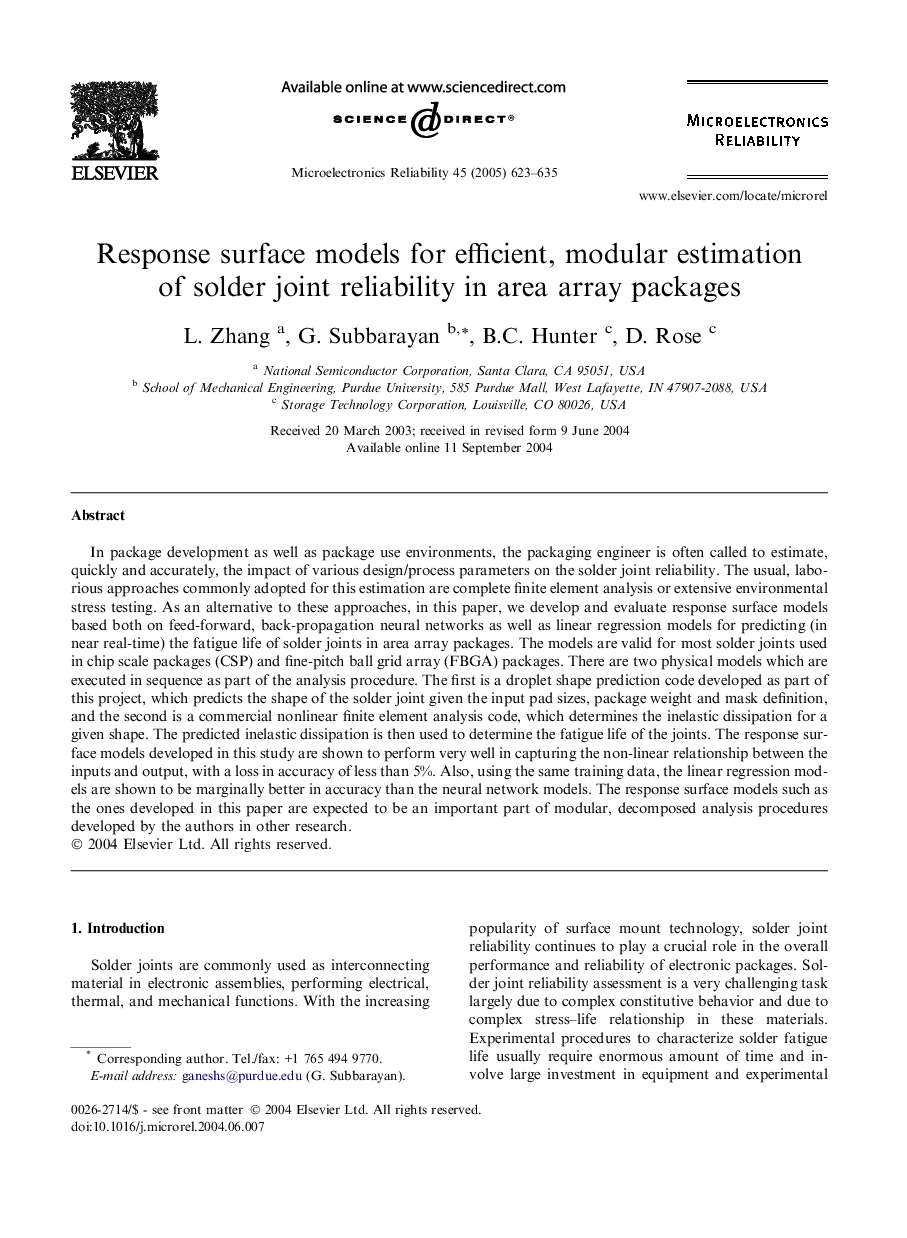| Article ID | Journal | Published Year | Pages | File Type |
|---|---|---|---|---|
| 9672352 | Microelectronics Reliability | 2005 | 13 Pages |
Abstract
In package development as well as package use environments, the packaging engineer is often called to estimate, quickly and accurately, the impact of various design/process parameters on the solder joint reliability. The usual, laborious approaches commonly adopted for this estimation are complete finite element analysis or extensive environmental stress testing. As an alternative to these approaches, in this paper, we develop and evaluate response surface models based both on feed-forward, back-propagation neural networks as well as linear regression models for predicting (in near real-time) the fatigue life of solder joints in area array packages. The models are valid for most solder joints used in chip scale packages (CSP) and fine-pitch ball grid array (FBGA) packages. There are two physical models which are executed in sequence as part of the analysis procedure. The first is a droplet shape prediction code developed as part of this project, which predicts the shape of the solder joint given the input pad sizes, package weight and mask definition, and the second is a commercial nonlinear finite element analysis code, which determines the inelastic dissipation for a given shape. The predicted inelastic dissipation is then used to determine the fatigue life of the joints. The response surface models developed in this study are shown to perform very well in capturing the non-linear relationship between the inputs and output, with a loss in accuracy of less than 5%. Also, using the same training data, the linear regression models are shown to be marginally better in accuracy than the neural network models. The response surface models such as the ones developed in this paper are expected to be an important part of modular, decomposed analysis procedures developed by the authors in other research.
Related Topics
Physical Sciences and Engineering
Computer Science
Hardware and Architecture
Authors
L. Zhang, G. Subbarayan, B.C. Hunter, D. Rose,
